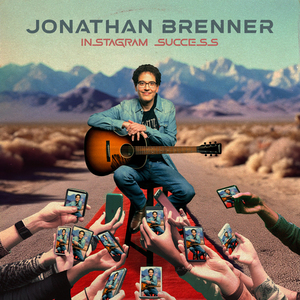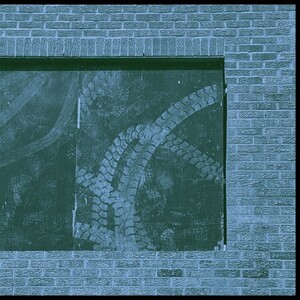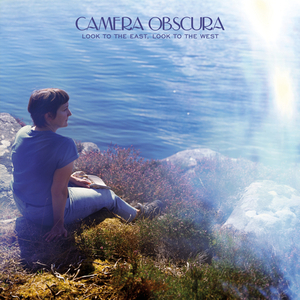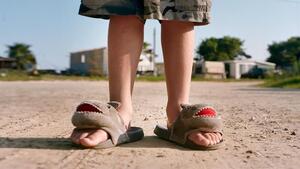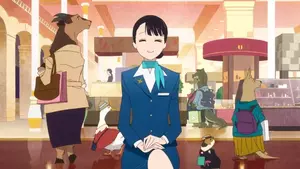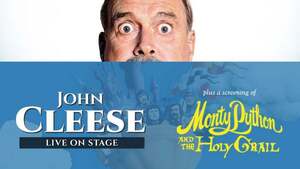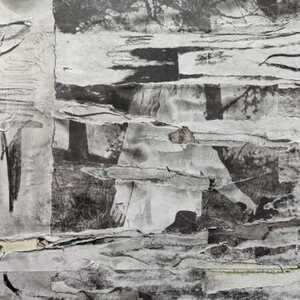
Radu Jude
by Lily and Generoso Fierro
Part satire, part documentary, part picaresque inverted road movie, part discursive essay, Do Not Expect Too Much From the End of the World collides historical and contemporary ideas and forces into a kaleidoscopic montage of Romanian society cracking up from the unwieldy pressures of capitalism. The film’s title (borrowed from poet Stanisław Jerzy Lec) and its sobering thesis are undoubtedly serious, but Radu Jude weaves a current of absurdity and humor throughout Do Not Expect Too Much From the End of the World to assemble a spectacle that fascinates, disturbs, and informs as it underscores the contradictions and complexities of living and surviving in the grave economic state of Romania today.
Jude presents two Angelas to us in his film: the titular female taxi driver from Lucian Bratu’s 1981 film, Angela Moves On, a work of neorealism from the Ceaușescu era, and the Angela of his own work, a current day production assistant driving within and across Bucharest to support her company’s latest project — a worker safety video for an Austrian furniture manufacturer. On the surface, the footage of the Angela from Bratu’s film may seem nostalgic for a simpler time in comparison to Jude’s overworked and increasingly hopeless Angela, but in his decision to slow down key points from Bratu’s film, Jude reveals the truths of reality and representation under Nicolae Ceaușescu and provides an understanding of how they influence the state of the present-day in which his Angela must operate. Ceaușescu’s reign still haunts the nation and serves as a point in time that many have collectively worked to depart far away from, but the new rulers are multinational corporations that take advantage of the lower cost of living and the shorter history of democracy in Romania and thus bring no relief to issues of exploitation, oppression, and poverty during the time of Angela Moves On.
The dual Angelas is only one key dialectical example in Do Not Expect Too Much From the End of the World. Jude’s film is completely and unapologetically composed of a multitude of contrasts: his Angela lives in our highly polarized times, and her reactions to her boss, her interactions with and descriptions of the injured factory employees she interviews for the worker safety video, her intellectual interests, and her rants as her digital foil Bóbita — a caricature of social media vulgarism at its finest (or lowest depending on your perspective) — are all products of the opposing ideas and beliefs unrelentingly surrounding her. While Angela’s experiences emerge from concerns and problems specifically in Romania, her reflections, frustrations, and motivations resonate with all of us who are trying to navigate societies pulled apart by capitalism of the 2020s where we spend more time working, with little to no promise of job stability and with any hope for the end to the grind getting pushed further beyond the boundaries of possibility.
In our lively and introspective conversation with Radu Jude, we discuss his interest in juxtapositions in his approach to cinema, the expectations of capitalism on image-making, the importance of creating a filmaic architecture, and his desire to encourage reflection before we embrace further change.
• •
GF: This week, Film at Lincoln Center showed the new restoration of Jacques Rivette’s L’Amour Fou, which is one of our favorite films of all time. Though the film centers on Racine’s Andromaque, a classical tragedy, L’Amour Fou possesses a modern energy carried by its two leads, Jean-Pierre Kalfon and Bulle Ogier, interacting with each other, their artistic circle, and the material of Andromaque itself. We watched your press conference at Locarno, and you referenced Rivette’s quote: “Cinema is not storytelling only; it is instead a descriptive essay, an art of juxtapositions and making connections.” In a sense, was Lucian Bratu’s film Angela Moves On your Andromaque as the central focus of juxtaposition?
RJ: Oh, that’s a very interesting and flattering comparison — I’ve never thought of that! Actually, to be completely honest, and I know that this is really shameful, Rivette is a recent discovery for me. Immediately after I finished shooting this film, I accidentally saw one or two films by Rivette, and I became instantly hooked, so I proceeded to see all of his films in the following two months, and I even read the book of his writings, Textes critiques. Then, all of a sudden, Rivette became very important to me in a way that no other director has been for me in the last few years. In fact, I’ll be at the Viennale to give a talk, and the only ticket that I insisted on was for L’Amour Fou because the only version that I was able to watch in the past was from a bad VHS bootleg transfer.
To get back to your question: One of the main ideas in L’Amour Fou is the juxtaposition of this contemporary story with the theater play, and now that you mention it, you are getting a degraded version (laughs) of that with my film, since I am not Rivette, and Bratu is not Racine, of course, but I think there is a common root. Rivette and I both love the idea of montage and Eisenstein and this idea of the juxtaposition of things, which can lead to the creation of new ideas, sensations, feelings, or points of entry.
So maybe, in this way, our films can meet at this idea of the montage. Storytelling in cinema usually means to simply have events or narration that advances and advances and advances, but there is also another way that is less used, which is more similar to a collage or more similar to literature of digressions or more similar even to this idea of montage in a philosophical sense of the clash of elements that creates something new that’s difficult to define. This was the idea for the whole film because it is made with elements that work with and against each other in a certain way or one after another, but not necessarily in a very logical way, but not completely illogical either, so it’s a bit in between.
LF: Do Not Expect Too Much From the End of the World is composed of masks and distortions and disillusionment. The most salient of them is, of course, Bóbita, but we see Angela morph in distinct ways in her reality that feels like different masks too: On the phone with her boss, we see an outraged and frustrated Angela when she’s on the phone with him and when she ultimately submits to his demands. We see a sympathetic, but also distant Angela when she interviews the different factory workers. We see a professional and deeply intellectual Angela when she’s driving Doris Goethe from the airport to her hotel. As you were creating Angela, how did you want to ground her in the midst of all of these masks? How much of her shape-shifting is driven by survival as compared to her own desires?
RJ: This is a complicated question. There is something here that is related to fiction films, but it is also possible to discuss it for documentaries in some cases, and that is: what is a character, and how do you define a character? Here you have many possible answers, starting with the classical example from dramaturgy and also from screenwriting, which creates the idea that a character’s role is just to perform or to exist in such a way as to advance the plot, so a character then becomes simply a pawn for the storytelling. Or, you could go in the other direction, like David Mamet, who says that characters do not exist — that in the beginning you have some words on a page, if it’s either a script or a play, and then you have an actor performing it, so there really is no character. For me, I’m somewhere in between these concepts.
Robert Bresson has a very interesting phrase in his book, Notes on the Cinematographer, where he states that the model, which is how he referred to his non-professional actors, should not play themselves, but he or she should not play a character either; in fact, he or she should play no one. I have this feeling that if we have to define the character as you say, it is a mix or a meeting between the body and the being of Ilinca Manolache, the actress. There is a lot of documentary within this character. It is herself in many ways — in more ways than one. Then, of course, it is something related to myself and to people who I have met, and there is something to the meeting of all of these elements in such a way that you can ask yourself if this character is believable as a real person or not. I think that the character is believable, but what I find a bit boring in the dramaturgy of cinema, and also in theater on many occasions, is that you have to define a character in a few lines and stick with it.
I recently saw Martin Scorsese’s Killers of the Flower Moon, and in every scene, DiCaprio speaks a bit like he’s an idiot, and he plays that very well, a bit worryingly well (laughs), but for my taste, I would have liked a moment where his character is not a complete idiot because I believe that we all have contradictions, and I am very attracted to contradictions. This is why I try to build Angela’s character in a traditional way of speaking where she can quote Proust or Faulkner and be an intellectual, but, for most of the time, she has a bullshit job. She can also be aggressive; she can be angry; she can be pragmatic, and I believe that even if a character exactly like this cannot exist in real life — but then again, who knows — I think that it remains true in a broader sense that we all contain contradictions. No one has only one, two, or three dimensions. I think that people are more complex than that, and not only complex, but also they have things that contrast with one another.
GF: You also stated in that Locarno press conference about your desire for your actors to contribute to their characters’ construction. In terms of the script, did you employ something similar to what Mike Leigh does, where he hands his actors small notes on what the scene should be about and allows them to create dialogue and react to the environment? Or were much of the dialogues and scenarios written and provided in advance? Particularly, we’re thinking about the scene where Angela is eating the massive burrito, and she gives money to a homeless man, who is then shooed away by the restaurant owner. Ilinca Manolache’s response to the owner feels unscripted.
RJ: So, firstly, I think that Mike Leigh does have a method like you describe, but I think it’s even more demanding on the actors than that; I believe he gathers his cast, then they develop the story and their characters themselves. That is Leigh’s process, and I think that’s unique, but it may have been adopted by other filmmakers.
I am not sure that I would be able to do that because I need a bit of distance to create the story or to even think about the story. Also, it depends on the type of actors that you have for your film. I don’t know about British actors, but Romanian actors, regardless of whether they are good or not very good, are not, in my humble opinion, particularly strong in improvisation. I don’t know the reason for this, perhaps it’s because of their school of acting and training, but whenever I have tried to get my actors to improvise, the results have not been satisfactory for me. I think that even Mike Leigh would have trouble making his kind of film with Romanian actors.
Finally, as far as my method, the kind of improvisation where you give an actor a scene and let them run with it just doesn’t work for me because everything that is part of the mise en scène is very important. So for instance, let’s say I am not only interested in the words that people will convey or try to convey — for me, each word is something in and of itself. For example, if someone says “phone” or “mobile phone,” for me, that difference is important. I cannot just let them say what they want, even if in some way it means the same thing. For me, every word has a special meaning, an important meaning, and I am interested in this meaning within the mise en scène, but of course, at the same time, I enjoy the contradiction that I’ve spoken about. I like the accidents that might create the scene, and so in the scene that you mentioned, with Angela and the beggar, that was staged, but we shot it in a real location with real people around, and we put the camera in a hidden place so that when surrounding actions took place, it became a mix because the way people reacted was real, since they didn’t know that we were shooting. So, I like to set up for these kinds of accidents or to rely on hazardous things, but only if I can create the kind of structure to allow these things to happen.
GF: The way you describe your approach, it reminded me of something from a conversation I had with the director Lodge Kerrigan about a film that he directed called, Keane, which we greatly admire. There are scenes in that film that took place in the Port Authority Bus Terminal in NYC, which can be an intense place. I asked him what it was like to shoot there and he explained that they rehearsed on location and shot that scene with the people who happened to be there that day in the background who were reacting naturally to the actor’s actions. I feel that style of filming added so much to that work.
RJ: I have seen Keane, this film with the man who is searching all over New York City for his lost child. It is a very strong film. That manner of shooting is effective, but it depends on the situation. Whenever you try to stabilize a film, there’s a balance you need to find: if you try to control it too much, you can suffocate it, but if you let it loose too much, you can disintegrate it too. It is difficult to know the proper dosage.
LF: In relation to that balance, you always feel chaos in the frame or lurking on the edges throughout Do Not Expect Too Much From the End of the World. But, the driving scenes of both Angelas add a stabilizing pulse to the film while also sharpening the insanity of the surrounding world because it creeps into their vehicles and is heavy on both when they leave their cars. During editing, how conscious were you in building a certain rhythm/structure with the driving scenes?
RJ: I think the film is very structured. It has a broad structure, which is very logical for me. You have the first part where you follow every step of this woman driving and doing her job in a regular workday, which is intercut with images from Lucian Bratu’s film and also with her avatar video creations. Then you have a second part, which is the next day when you see the results of her job, where the focus is on another character, so she then becomes a minor character.
To try to express how much of this is controlled and how much is chaos, it is exactly like the question of how much is fiction and how much is documentary. Because, of course, it is a fiction film, and with that, there is a lot of staging and scripted dialogue, but because we shot in the real traffic of Bucharest, that gives the film a documentary quality and a documentary sense of timing, so to speak.
You know, at some point, I thought that my film was the opposite of Cronenberg’s Cosmopolis because, in his film, you have a rich man who lives his whole life in a limousine, and in my film, you have a working class woman who strives to stay afloat, and her job forces her to live in her car, and her car becomes somewhat like the car in Cosmopolis, but in another way becomes an extension of herself. It somewhat becomes her house and her being. You see it in a realistic way, but you can also see it as a kind of metaphor about this new condition of human beings in capitalist modernity where new technology gives us different degrees of freedom, yet at the same time, it is enslaving you.
It is also an anti-road movie, especially in terms of American cinema from the 60s to the 90s in films like Easy Rider and Thelma and Louise, where the car is seen as the epitome of freedom! You hop into your car and put your “pedal to the metal,” and you race to find your freedom, but I find that in Romania, and especially here in Bucharest, which is so crowded and polluted, a car becomes a trap, and it cannot be a metaphor for freedom anymore.
LF: Yes, we lived in Los Angeles for a few years and there a car becomes not even your home, but almost a coffin.
GF: As we watched the car scenes, Abbas Kiarostami’s Ten and Jafar Panahi’s Taxi immediately came to mind. Like Angela Moves On, both of these films were created under heavy political censorship and yet reveal truths. What is the nature of censorship in the images of contemporary Angela and the factory employees? Is today’s censorship of a capitalist kind in non-totalitarian societies?
RJ: I am afraid that the question is too general for me because, when we speak of censorship, we usually mean the ugliest versions of it, like political or economic censorship. At the same time, there are things in film and really every work of art that are of an illicit nature, which I think is fine for the most part, but I would never say that a snuff film falls under the freedom of expression. For films like that, there should be censorship. So, I do believe that when we talk about censorship, we must consider what kind of censorship and in what context, and this is why I have some difficulty answering in a broad manner. I think of political correctness in the same way. I find some of the ideas normal and even good, and in other cases, I find them idiotic. With that said, if you ask me if I am for political correctness, I will respond, “I don’t know,” because I think that we have to discuss specific issues in detail one by one.
In my film, when a corporation or a private person pays for something, they want something in return. There is then this clash because we all have this belief that art has to show the truth, but when a corporation or commercial entity then dictates what the image needs to say, that creates a conflict. I’m sure that Western societies have been dealing with this kind of issue for forever, but this is something quite new in Romania. The dictatorship had a very strong and clear kind of censorship that was very brutal most of the time, but they could also be fooled on occasion, or there could also be some kind of negotiation. But now, you also have this form of economic censorship or boycotting censorship towards some product, which is an entirely different kind, and it’s quite new.
If you think of my film, it is kind of amazing that there aren’t that many Romanian films that deal with this relationship between individuals and the new gig economy, the new capitalist economy, and the new society because not many of us know how to deal with such issues.
LF: I agree that censorship is a very charged word because it prompts debate about rights to expression, and this new nature of economic censorship is more like economic requirements that financiers define and expect, and that is old here, but even though it’s old, most people still do not know how to deal with it because it is a very complex issue. And, few here have captured these economic expectations as acutely as you have.
RJ: Maybe it’s also because of what Godard used to say that people don’t like to watch people working and work problems as topics for film (laughs).
LF: And your film offers no answers. It explores all of it, and audiences, especially in the United States, want answers and the quick solution to a problem. But in today’s world, it is often unclear what we are supposed to do.
RJ: Yes, but there’s no answer because there’s no question. My purpose with this film was very modest. Getting back to the Rivette quote from earlier in this conversation, cinema has the capacity to describe, in a very broad way, but also in a very complex way with a certain language and with situations, so I tried to describe the lives of some people who are caught between personal relationships and economic relationships in a city, in a community, and in a country with this new economy. So, when people tell me that I don’t offer solutions, I respond by saying that I was simply trying to describe something.
I’ve also been asked a few times, “Does your film change something? Is the film changing people or society?” I paused a bit and thought about how to respond, and I realized that all media tries to change people. A commercial tries to change you by making you want a Pepsi instead of a Coca-Cola. A commercial for a political candidate tries to get you to vote for someone and not for another. I then thought that if my film tries anything, it tries to get people not to change or, at least, to wait a few minutes and reflect on things before changing opinions. I am happy because my films are not trying to change the world; on the contrary, they are trying to get you not to change because things are changing too rapidly.
GF: We felt the same way about your film as we did the third part of Miguel Gomes’ Arabian Nights, “The Enchanted One,” where he shows the bird trappers who are trying to teach the birds songs for a competition. He brilliantly gives you the first two parts where he shows the effects of a world that is rapidly changing, and then by showing these trappers, he shows a community where people can slow everything back down.
GF: You were recently quoted as saying that your “films are becoming more and more amateurish.” We love the urgency in what you’re doing now, but we also love your earlier films Aferim! and Scarred Hearts, which were more formalist in nature. Do you see such formalism as out of place given the pace of change in the world and the state of filmmaking in general?
RJ: There is a mix here. It is mostly due to some personal inclinations, with a certain number of years that have passed over me, but also with the fact that with the cinema of today — and here I can only speak more towards European cinema because I am closer to it than to American cinema — is more and more standardized from many points of view. From storytelling to technical aspects, all points of view in the filmmaking process are more standardized to make what is called “official cinema.” There are all of these workshops these days where you go with a project and you meet experts — experts who tell you to cut your film in a certain way. Then, you go to a lab like Sundance, and they tell you something else that you can do, which can be a good thing, and I’m not against those things per se, but I get the impression now that the wilder things are being cut out in order to make a very rounded work. And so, perhaps because I am fed up with this, little by little, I started to develop a taste for making trashy or unfinished things, which, of course, is not something very new. I think that there was always a kind of tension or dialectic between these kinds of elements.
Look at the 1960s, for example. You still had these great Hollywood films, and at the same time, you had Warhol’s films. You also already saw a strong rise of independent cinema like Cassavetes, and then you also had the films of Jonas Mekas. In the 1970s, you had films like The Godfather, Star Wars, and Apocalypse Now, but you also had these small diary films from the avant-garde.
So, I am more and more interested in learning from underground cinema, and I have always felt that there were dialogues between all of these people who seem to support only one type of cinema and who we falsely assume don’t want to see any other type of cinema. I recently read that David Fincher’s Seven had credits inspired by the films of Stan Brakhage. Of course, you can criticize Fincher for that because he takes these very strong aesthetics and uses them for these credits, but to me, it is evidence that there is always a dialogue between types of cinema. And you can see the alternative in a Warhol film where he incorporated Hollywood themes, like how he utilized the idea of a “superstar.”
I am interested in trying to find myself or to be myself with my work, making a dialogue between the history of cinema, literature, and internet cinema, like TikTok videos, and trying to not see them through their specificity, not be judgmental of them, and trying to see that they are all part of the same kingdom of cinema, so to speak.
LF: As you describe this, I am oddly reminded of a quote from Alain Robbe-Grillet in his essays on the new novel: “There would be a present world and a real world; the first would be the only visible one, the second the only important one. The novelist’s role would be that of an intercessor: by a fake description of visible things — themselves entirely futile — he would evoke the “reality” hidden behind.”
RJ: I have not read Alain Robbe-Grillet’s writings yet, but that is beautiful. It is like the quote, “Cinema tries to film the invisible.”
LF: As a filmmaker, in your current shift away from the structures of your films like Aferim! and Scarred Hearts, are you more in pursuit of that kind of invisible in a conscious sense?
RJ: That is difficult to say, as I don’t know myself that well. I would say something different. In my narrative films, I am interested in two things, which are of course connected. One of them is storytelling, and the other is montage. By storytelling, I mean the structure of the story of the film is extremely important to me. It’s part of the film itself, and I am strongly interested in researching and finding structures that maybe aren’t completely original, but are also not very traditional. Not for the sole reason that I do not want to make a traditional film, but firstly, because I may not able to do it, or I get bored making something traditional — I’m not sure which one — and secondly, I think that the architecture, the structure of the work, is maybe the most important element, which I think is the case more in literature and music than in cinema.
When you read Ulysses by James Joyce or a Faulkner book, the structure of that novel is unique or extremely powerful, not only the story and not only the characters. So, I think that this is what I am most after. I am very fond of John Dos Passos because of his U.S.A. trilogy, which has great narration and storytelling. It has not only political and social elements, but also documentary cuts from newspapers, biographies of politicians, historical characters, and interior monologues. All are put together in these books, and it works! But today, if you made a film like that, it would be labeled as experimental cinema, but I don’t agree, as I feel that that is real storytelling.
LF: Your more recent films contain possibly some transgressive moments in them. With Bad Luck Banging or Loony Porn, there’s the explicit opening sex scene, and with Do Not Expect Too Much From the End of the World, there are some very base elements in Bóbita’s dialogues and Angela’s sex scene in her car. Aferim! has some intense violence that may be considered as transgressive as well. These elements are aligned with traditional definitions of the transgressive. But, where I see your films emerging as incredibly different and beyond what is usually expected, and perhaps accepted, is this mix of high culture and low culture, with things that are very base and mixed with high philosophy. Do you see that blending that you achieved here as a new kind of transgressive cinema?
RJ: You know I saw this word for the first time, “transgressive,” in Tarantino’s book, Cinema Speculation, where he writes that the most transgressive films were those from Abel Ferrara and Paul Verhoeven. But what does this word really mean, though?
LF: It is connotated with its extremeness of subject, and so quite often, transgressive cinema will touch on topics that are, for lack of a better word, unsavory. Nasty sexual deviation, very intense violence, that I wouldn’t say is necessarily cruel or gratuitous, because it is actually grounded in something ugly and real. It is these extreme elements or topics that dive a little deeper into the id of us as humans.
GF: As far as cinema, the New French Extremity films of the late 90s and 2000s, like Catherine Breillat’s Anatomy of Hell and Gaspar Noé’s I Stand Alone, are good examples of the kind of films that could easily be labeled as transgressive.
RJ: Well, I’m not sure then, because if you think of Gaspar Noé and the Extremity film movement, I wouldn’t see myself as that extreme. I would say that I am not very attracted to this idea, in that I would never attempt to do a violent scene or a hardcore sex scene just to be transgressive. For example, in Bad Luck Banging or Loony Porn, I was amazed that people were disgusted by the sex scene at the beginning of the film. Perhaps because they expected it to be an auteur or arthouse film.
When I conceived that scene, I said that I wanted to do the most banal sex scene ever — nothing spicy and not transgressive, as you say. I thought that a banal sex scene would better serve that story and the moral problem that was the issue at hand or the issue of hypocrisy. I also wanted the characters to not have a sex life that was spectacular, like in real amateur porn videos where the sex looks so very sad. You know, just a quick fuck on a Friday night! That’s why it surprised me when people commented that the scene was shocking or transgressive. As you said, Generoso, Gaspar Noé, sure, he’s transgressive in his approach, but not me, no.
So, as far as this mix between highbrow and lowbrow, I am interested in it, of course, but I believe that it is not necessarily a transgressive quality; instead, I think that this is the most important facet of the culture since modern times. There is a book entitled High and Low: Modern Art and Popular Culture by Kirk Varnedoe and Adam Gopnik. It is about how Modernist art was inspired by low forms like commercials, journalism, typography, or caricature, and I found that book and the examples in it to be very good in showing that despite the differences between what is considered high and what is considered low, there can still be a mutual influence between these elements. I strongly believe that you cannot put them both on the same level, but in your mind, you can be inspired by James Joyce and a newspaper comic strip or by Bach and a cartoon or a caricature from Charlie Hebdo or The New Yorker or by a Jacques Rivette film itself. ◼
This interview was edited for length and clarity. Featured photo by Silviu Ghetie, courtesy of 4ProofFilm4.
https://heretic.gr/film/do-not-expect-too-much-from-the-end-of-the-world/

